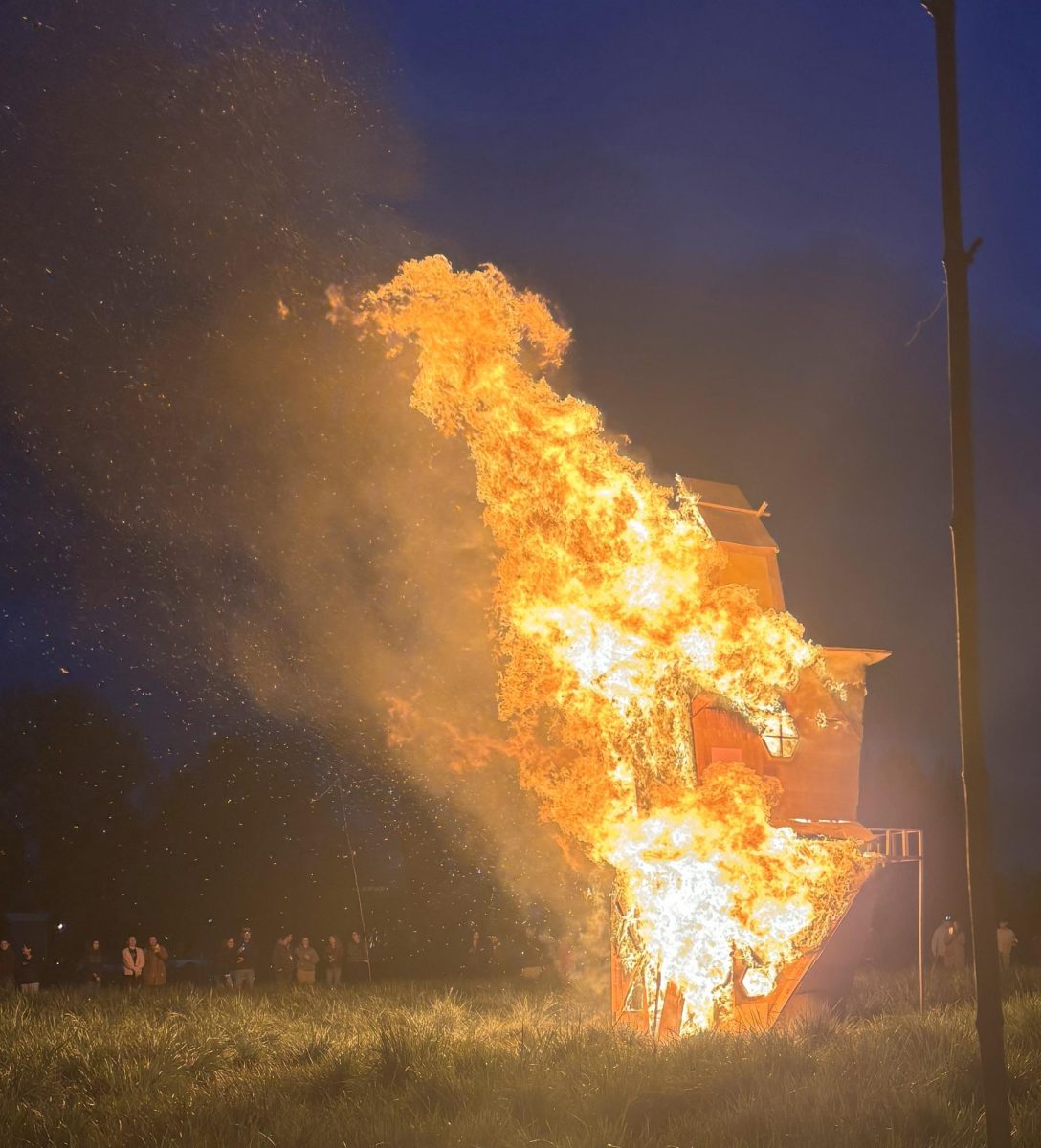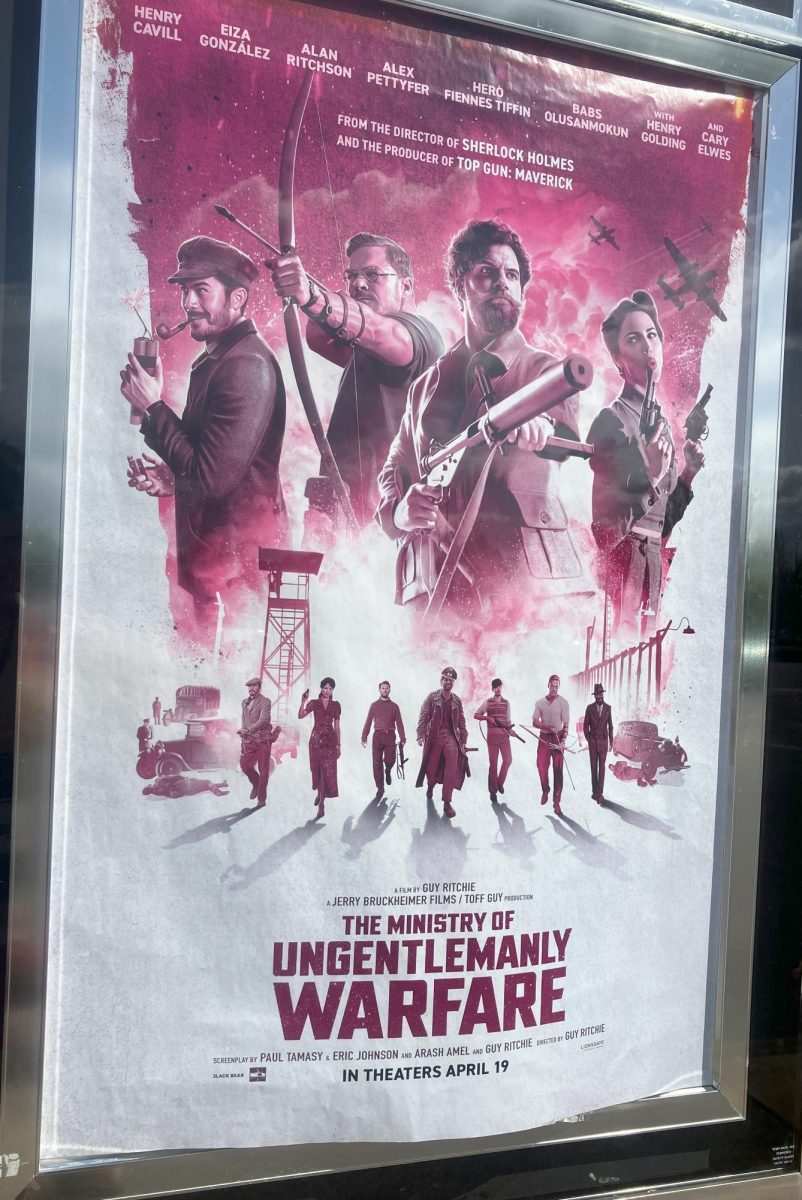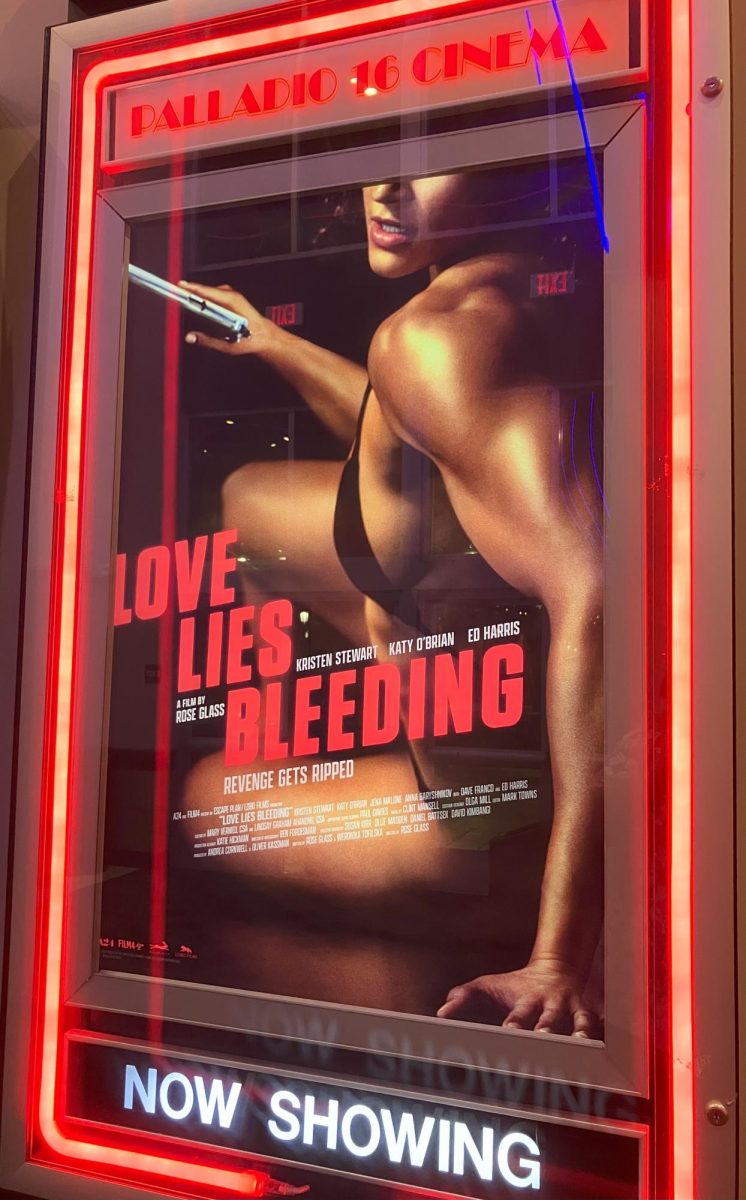In honor of the newest exhibit, “Uncertain Times: Contemporary Art Views on the Fate of the Newspaper,” at the historic Pittock Mansion in Portland, a Linfield professor discussed the symbolism of newspapers in 19th century paintings Oct. 26 in the Pittock Mansion Social Room.
Brian Winkenweder, Art and Visual Culture Department chair and associate professor of art history and visual culture, analyzed artists’ responses to the ever-changing transitions that print newspapers have endured through the years.
The mansion’s exhibit featured artwork displaying the hardship and success of the print newspaper industry. It raised questions about the possible symbolism that newspapers present, Winkenweder said.
“It used to be that newspapers were found at taverns and inns, where a literate person read to the illiterate,” he said. “The change in culture has had artists respond to the shifts.”
Winkenweder concentrated on three artists and their paintings: Sir David Wilkie’s “Chelsea Pensioners Receiving the London Gazette Extraordinary of Thursday, June 22nd, 1815, Announcing the Battle at Waterloo;” Richard Caton Woodville’s “War News from Mexico;” and Paul Cézanne’s portraits of his father reading a newspaper.
“The exhibit and presentation tied into the theme of the newspaper well,” junior Alison Pate said. “[Winkenweder] went back to the root, looking backward in time, whereas the exhibit was looking forward. So the whole thing ended up being circular.”
The common themes for the paintings Winkenweder discussed were war and victory.
“Newspapers have been a cataclysmic force for shaping opinion and patriotism,” Winkenweder said. “This has been a key defining point for modernism and is an interesting theory and philosophy to explore in the images.”
Winkenweder, who had been planning his speech since last spring, presented his observations in a PowerPoint, which included detailed analyses of the paintings.
“[Winkenweder] is my adviser, professor and boss, so I wanted to go and support him,” Pate said. “It’s nice to get off campus, meet new people and go somewhere new.”
Henry Pittock, the original owner of the mansion, became the owner of The Oregonian in 1861. The exhibit, in part, branched from this history, Wikenweder said.
“The exhibit was really well put together, demonstrating a wide variety of newspaper history,” Pate said. “It was so appropriate for Pittock Mansion, and everything meshed together well.”
Winkenweder has prior experience on the topic with a master’s degree and a published journal.
He is currently working on a show about the demise of print newspapers, he said.
“The news industry is always in flux, and we are just experiencing another transformation,” Winkenweder said. “Artists are aware of and are pointing out these transformations.”
To learn more about the Pittock Mansion and its art exhibit, visit pittockmansion.org.
Jessica Prokop/Culture editor
Jessica Prokop can be reached at [email protected]






